No exercise can do it all: Planks are a tried-and-true core-builder, but they don’t burn many calories. The jumping jack — a gym-class classic — will get your heart rate up and your blood pumping, but it doesn’t accomplish much more than that.
What if you could combine these two basic bodyweight movements and get something better than the sum of its parts? The plank jack is the solution. This simple drill will help you boost your muscular endurance, improve your cardiovascular capacity, and strengthen your abs simultaneously.
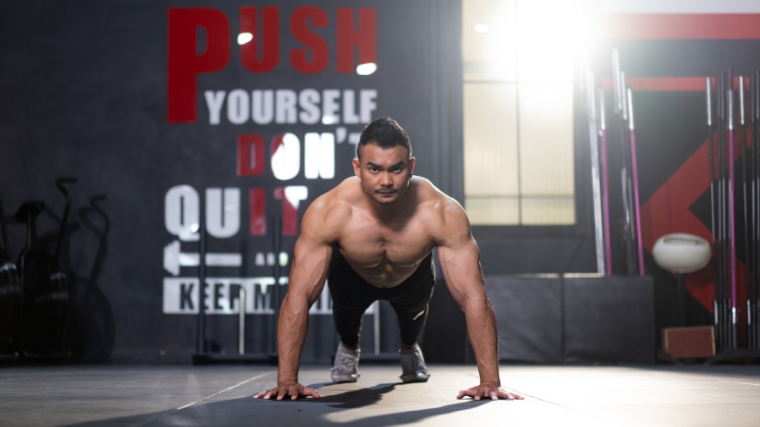
Here’s how to do a picture-perfect set of plank jacks, plus some valuable variations and training tips to help you level up your next workout.
- How to Do the Plank Jack
- Plank Jack Sets and Reps
- Common Plank Jack Mistakes
- Plank Jack Variations
- Plank Jack Alternatives
- Muscles Worked by the Plank Jack
- Benefits of the Plank Jack
- Who Should Do the Plank Jack
- Frequently Asked Questions
How to Do the Plank Jack
As far as bodyweight exercises go, the plank jack is pretty straightforward; it’s a loose blend of two exercises that you’re probably already at least somewhat familiar with — the plank and the jumping jack.
To perform plank jacks, all you’ll need is some open floor space. Consider grabbing a good yoga mat to cushion your hands or feet.
Step 1 — Assume a Plank Position
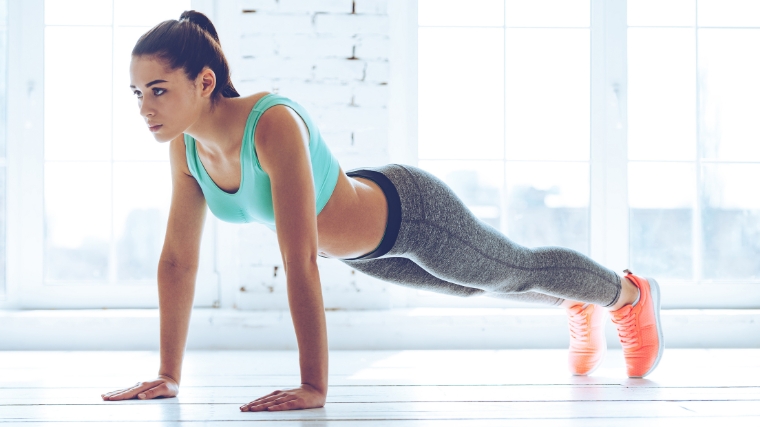
The first step is to anchor your body for success. Get into a push-up position with your palms flat on the ground and roughly shoulder-width apart. Your arms should be fully extended, as should your legs, and your feet should be together. You should have a straight line running from your neck all along your spine, and right down to your ankles.
Coach’s Tip: You can also set up with your elbows on the ground if you choose.
Step 2 — Brace Yourself
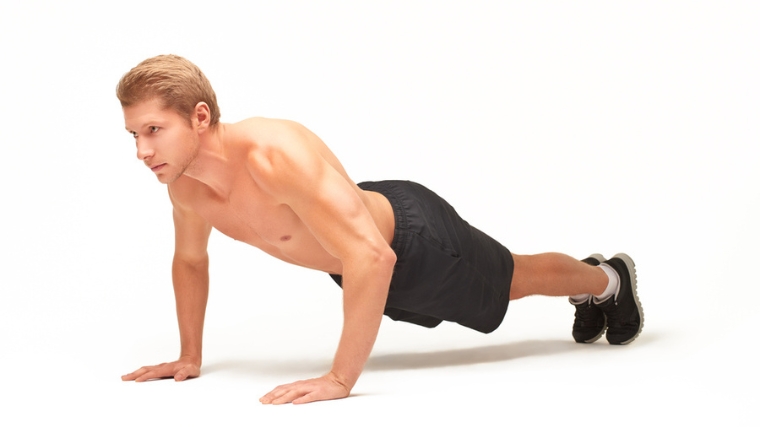
Before moving, you should brace your body by actively contracting your abdominals and glutes to lock your spine into a rigid position. Tense the muscles in your body from head to toe.
Coach’s Tip: Learning how to brace yourself in the starting position will carry over to other exercises, such as the push-up.
Step 3 — Lift and Spread
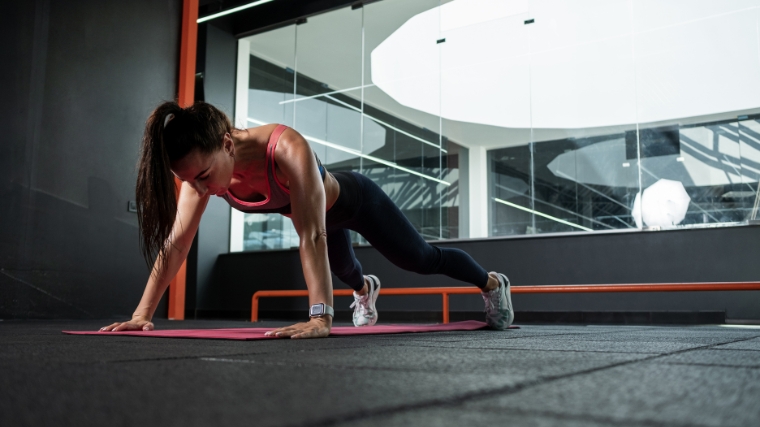
Use your glutes to propel your toes off the ground and drive your feet outward so they land slightly wider than shoulder-width apart.
Coach’s Tip: You don’t need to lift your toes too far off the ground when you go to move your legs. Think about sliding your feet out, not lifting them, and planting them again.
Step 4 — Bring It In
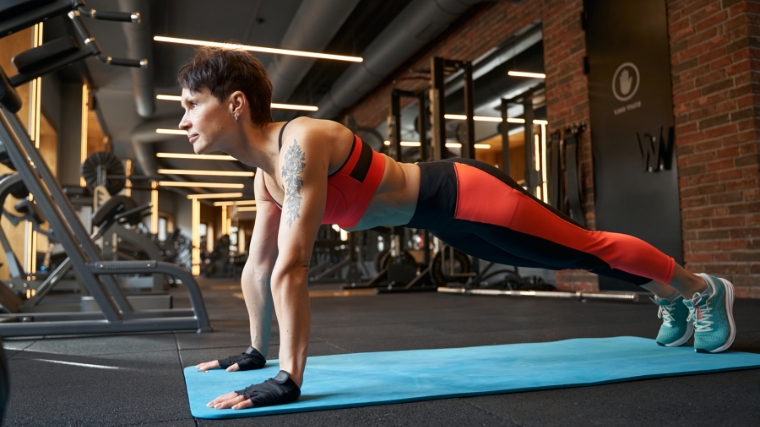
Drive from your hips to launch your toes off the ground once again and move your feet inward to return them to their original position.
Coach’s Tip: This movement will be far more sustainable if you can learn to return your feet to their starting point without smacking them together.
Plank Jack Sets and Reps
It’s critical to remember that basic planks are often executed either as a warm-up or as a finisher after you’ve completed the bulk of your workout. It’s also important to note that a basic plank can be quite challenging to hold even if your body is perfectly motionless, so building toward longer sets of plank jacks may take some time.
- During Your First Session: Keep it simple with two rounds of 20 seconds of movement.
- To Enhance Muscle Endurance: Perform five sets of plank jacks in intervals of 90 seconds to two minutes, followed by 60 seconds of rest.
Common Plank Jack Mistakes
The plank jack might look like a fool-proof movement, but therein lies the rub: The only foolish move would be to think that you couldn’t screw up a simple maneuver like the plank jack if you fail to remain focused on both your form and objectives.
Raising Your Butt Into the Air
As with all lateral planking movements that necessitate core engagement — including push-ups — lifting your backside out of alignment with the rest of your body is a surefire way to eliminate most of the desired tension on the core muscles.
During the plank jack, keep your torso locked in a single position and focus on shifting your legs side-to-side rather than lifting and dropping your backside.
Dipping Your Pelvis to the Floor
In principle and practice, allowing your pelvis to sink toward the floor results in almost exactly the same outcome as allowing your butt to rise – you eliminate the bulk of the desired muscle stabilization from the equation.
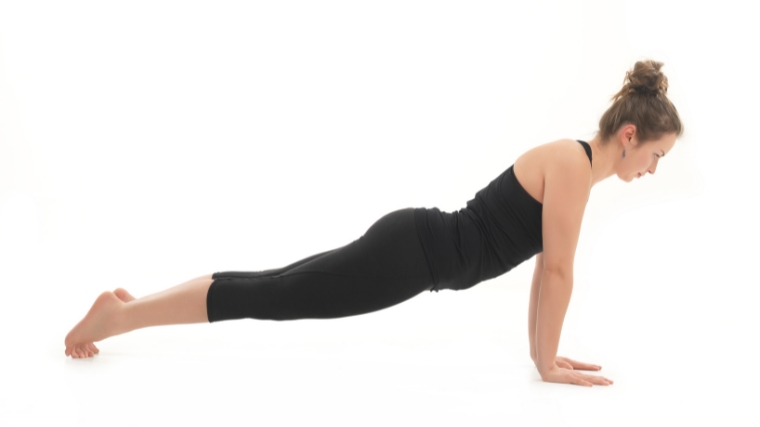
[Read More: Everything You Need to Know to Build Your Workout Program]
If you can’t keep your pelvis aligned with your torso, you’ll probably find it difficult to swiftly lift and shuffle your legs out during the plank jack.
Exaggerated Foot Movement
While not as much of a sin as either of the first two mistakes, propelling yourself way up into the air is likely to signify that you’re initiating your launch from too sunken, loose, or slouched of a position, which is suboptimal if your goal is to strengthen your core.
That’s bad enough, but popping yourself high into the air also reduces the amount time your body experiences tension during the movement. In short, what you’re doing may look and feel impressive, but it’s defeating the overarching purpose of the plank jack in multiple ways.
Plank Jack Variations
Whether you’re looking to make things simpler, more challenging, or less boring during ab training, these straightforward modifications to the basic plank jack will add a different dimension to your training protocol.
Single-Leg Side Step
If regular plank jacks are a bit too challenging for you at the moment, or if you have exhausted yourself with plank jacks but still wish to remain in motion, you can keep the movement going by extending your feet out to the side one at a time, tapping the ground with your toes, and then returning your feet to their central starting point.
[Read More: What Is Unilateral Training And Does It Really Fix Imbalances?]
You can also think of this unilateral exercise as a precursor to the plank jack; something you can do to warm up before you start your first set of the exercise itself. Moving one leg at a time will help you identify exactly how much distance you should cover during your reps.
Plank High Knee
If lateral leg movement is difficult, uncomfortable, or simply unenjoyable for you, you can opt for plank high knees instead of plank jacks. The general idea of the exercise is the same, but the execution is a little different.
[Read More: The Best Foods For Energy Before, During, And After Your Workouts]
Plank high knees require you to tuck your thigh up under your torso and bring your kneecap in contact with your stomach. This involves an active contraction of the abdominal muscles, rather than the stability-focused isometric contraction you’d find in the plank jack.
Plank Jack Alternatives
Plank jacks are awesome and effective, but they’re just one of several strengthening, blood-pumping core exercises and can be executed from a plank position. Here are a few alternatives you can substitute for plank jacks when you’re craving some variety.
Burpee
To ante up on the challenges provided by the plank jack, you can go for the devilishly-tiring burpee. This classic conditioning move combines a push-up with a vertical jump and will have you absolutely pouring sweat.
[Read More: Best Home Gyms for the Money]
The best part of the burpee is that it stimulates the dimensions of athleticism that are also tested in the plank jack. You need to be agile enough to transition from a push-up to a jumping position and have the core strength to keep your form tight the whole way through.
Alligator Crawl
If you want to combine the feeling of motion of a bear crawl with the core challenge of a plank, the alligator plank walk might be a suitable alternative for you.
You are in constant forward motion with little relief for your midsection, and the stronger your core is, the more total ground you can cover. Note that you’ll need ample floor space to move around for this one.
Mountain Climbers
If you increase how far each leg moves, bringing one knee up to your chest in an alternating fashion, you’ll elevate your heart rate while only slightly reducing the sustained lateral tension of the exercise.
[Read More: The Right Way To Breathe to Make Planks More Effective]
The beauty is that mountain climbers can easily be alternated with plank jacks within the same set, so there’s no need to choose one over the other permanently.
Muscles Worked by the Plank Jack
Yes, the standard plank is an isometric exercise, and that remains true of your upper body muscles when you transition to plank jacks. However, they also add a plyometric component into the mix, forcing your muscles to exert themselves in multiple ways over a set.
Rectus Abdominis
The largest muscle group in your torso is your rectus abdominis; your “abs.” Identifiable to nearly everyone as the six-pack muscles, your rectus abdominis will contract to keep your spine locked into the desired position.
Transverse Abdominis
Lurking beneath your visible abs, the transverse abdominis will also assist with stabilizing your upper body and keeping it braced into place throughout your plank jack sets. This muscle is a deep lumbopelvic stabilizer that you can’t really see in the mirror, but nonetheless, it’s working hard any time you contract your core.
Glutes
Your three gluteal muscles — the gluteus maximus, medius, and minimus — play a limited but important role during the plank jack. The glute max, a large and powerful tissue, contracts to keep your hips in an extended position and maintain midline stability.
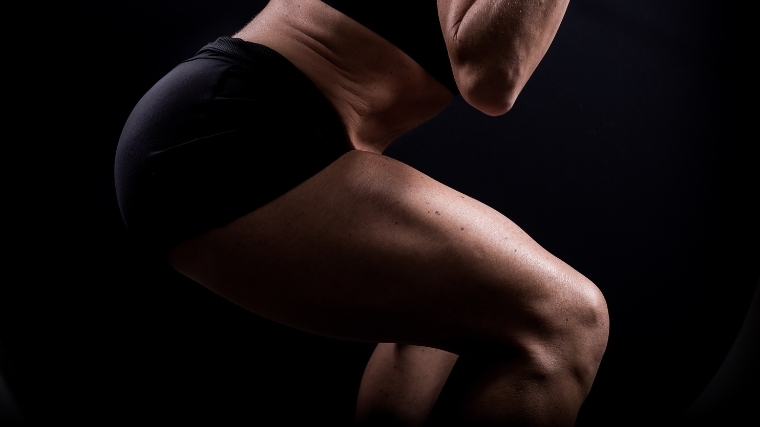
[Read More: Everything You Need to Know About How to Increase Strength]
Your glute medius is primarily a hip adductor; it contracts to pull your leg out to the side on each and every repetition of plank jacks you perform.
Benefits of the Plank Jack
For such a basic movement, the plank jack confers several benefits to its users across a healthy range of strength-and-conditioning-related categories.
Improved Anti-Rotary Strength
While the garden-variety plank tests how long you can sustain a locked-in posture, the plank jack tests your ability to stabilize or re-engage the stabilization of one half of your body while the other remains in constant motion.
[Read More: The Best Plyometric Exercises To Power-Up Your Training]
This makes for an appropriate method of core workout, since many of the muscles in your midsection are “designed” to resist errant or external forces while your limbs move in space.
Calorie Burning
The constant back-and-forth motion of your feet makes the plank jack a two-for-one: You strengthen your core and hips, sure. But the movement of your legs also adds up to a lot of physical activity in a short time, leading to heaps of calories burned over a few sets.
Who Should Do the Plank Jack
The plank jack has something to offer everyone. If you’re a speed athlete who depends on coordinated movement, or an everyday gymgoer trying to get a lot done quickly, the plank jack should be able to work its way into your regular rotation of exercises.
Speed Athletes
Body positioning is vital to your performance if you’re an athlete whose performance is measured by speed — like a swimmer, runner, skier, or rower. The extent to which your core muscles struggle to maintain optimal body alignment as lactic acid fills your bloodstream is an underrated factor in your output. Still, it can make all the difference in the world at the tail end of your races.
Plank jacks enable you to tax your aerobic system and engage your stabilizer muscles in the precise way that they will be challenged to work together when you race with pride and placement on the line.
Physical Athletes
While speed may also be a welcome ally in sports like water polo, football, lacrosse, field hockey, or even basketball, you must also be able to resist external forces. Those forces often come in the form of other players trying to box you out, knock you down, or hold you back somehow.
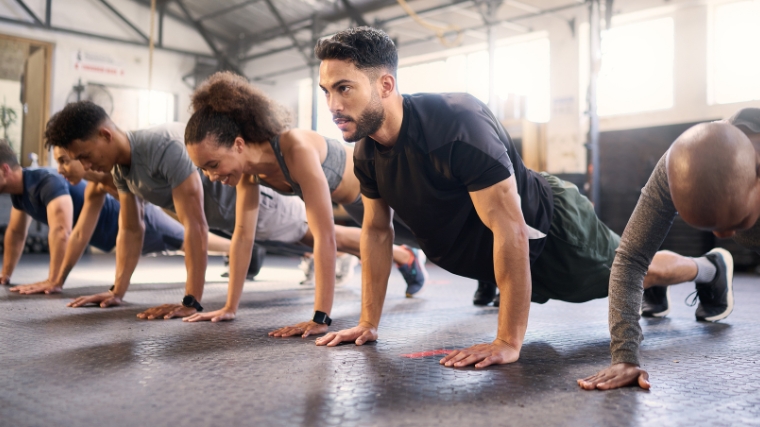
[Read More: The Best Plank Variations To Strengthen Your Core]
Plank jacks train your core to remain locked in and immovable while your legs keep pumping. As a high-speed conditioning tool, they can also teach you to keep a level head and regulate your breathing in a fatigued state — invaluable skills to have on the field.
If You’re Short on Time
Not everyone can neatly silo their exercise routines into neat little bubbles labeled “chest,” “core,” “cardio,” and so forth. If you’re strapped for time and need to make each second count, plank jacks will enable you to hit two birds with one stone.
Plank jacks allow you to elevate your heart rate while strengthening your midsection — at a minimum, this will prevent you from leaving the gym feeling like you failed to maximize your time.
Jack Up Your Planks
Some exercises sell themselves. If you’re already an athlete, the plank jack can make you a better one. If you’re short on training time, the plank jack will enable you to maximize your precious seconds without leaving you feeling like you’ve aimlessly disposed of your workout.
No matter your “why”, there’s a good chance that the plank jack can — and should — find a home in your training repertoire. Whether you’re looking for a killer ab-day finisher or are bored to tears of the treadmill and want to warm up in a new way, the plank jack is for you.
FAQs
Are you still scratching your head over the plank jack? No worries. Here are a few common questions answered.
Should I try plank jacks if I have difficulty with regular planks?
This is a case where holding a plank is a clear prerequisite to inserting plank jacks into your training regimen; you wouldn’t want someone who couldn’t do a pull-up to substitute weighted pull-ups in the hopes that it would make a basic pull-up easier.
Developing a minimal level of sustainable core strength through any number of less-intensive exercises – including standard planks – is advisable before advancing to plank jacks.
Can I substitute plank jacks for other cardiovascular training methods?
You should consider all of your fitness and performance goals when determining what form of cardiovascular training is best for you. However, plank jacks are best thought of within the context of inserting some semblance of cardiovascular training into a resistance training session when time is short, or training your stabilizer muscles to maintain your body posture even during periods of intense fatigue. Certainly, they’re no substitute for a multi-hour running session if your ultimate objective is to complete a marathon.
If I can do plank jacks should I stop doing regular planks?
Not at all! They’re different exercises, after all. The leg motion involved in the plank jack will, to a degree, detract from your ability to brace your core. If you’re only concerned with developing isometric abdominal strength, planks will do you just fine.
Featured Image: Siam Stock / Shutterstock